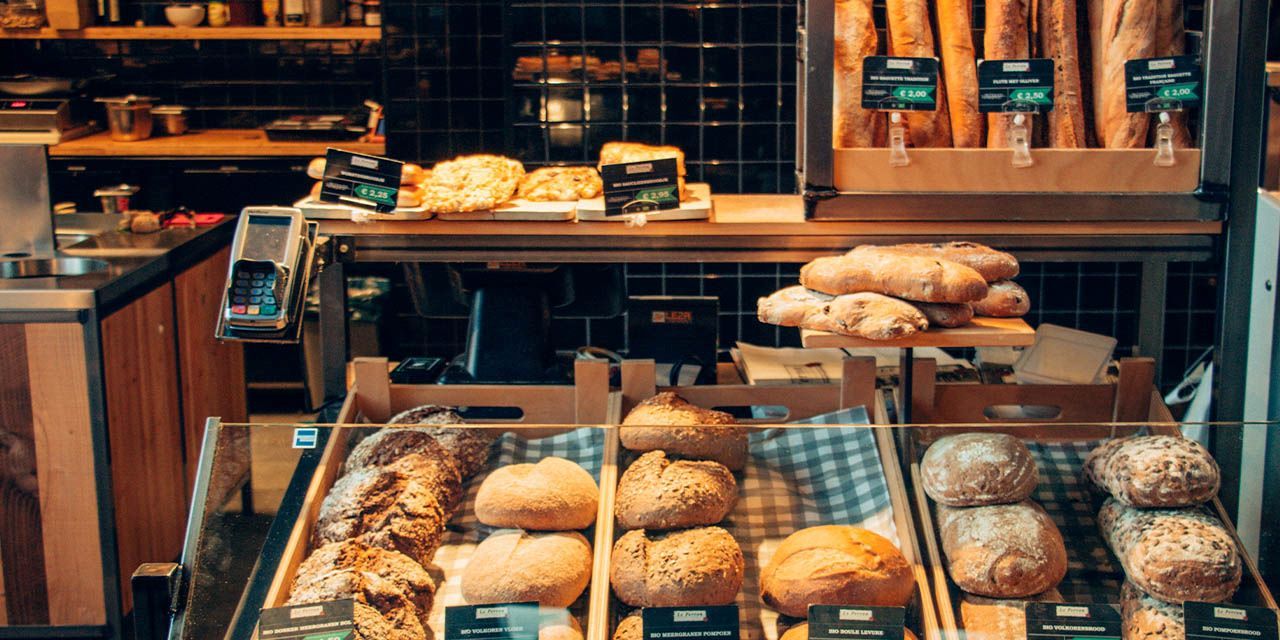Store execution essentials: The secrets of successful retail operations
Aug 28, 2024 • 9 min
No matter how meticulously you plan out your retail experience, it won’t make any difference if your in-store employees have the tools to make your vision come to life. Store execution directly impacts customer experience, inventory accuracy, and sales results. Yet, with the rise of omnichannel retailing, creating a consistent customer experience in both online and physical stores is more challenging than ever.
Retailers using manual ordering systems often find it harder to keep stock levels optimal and hinders associates’ attempts to comply with planograms and effectively manage shelves. Thankfully, AI-enabled technology and data analytics advances have transformed store execution, enabling more precise and efficient operations.
With the help of specialized AI, demand forecasting can now consider multiple factors at once, like seasonality and promotions. Meanwhile, replenishment has advanced to reduce manual work and minimize stockouts as well as spoilage.
What is store execution?
Store execution is the implementation of decisions on retail merchandising, promotion, pricing, and space planning at the store level. In successful store execution scenarios, all aspects of the store’s operations align with the retailer’s strategic goals, including inventory management, customer service, and in-store experience.
Store staff receive directives to execute a range of tasks, from receiving deliveries to swapping pricing tags on shelves. Traditionally, this was done by mailing printed planograms to each store, but today’s retailers use sophisticated, AI-driven digital platforms that enable more agile and cost-effective store execution.
5 benefits of successful store execution
Seamless store execution creates welcoming spaces that emanate a sense of belonging and engagement. Stores that excel in these areas don’t just satisfy customers; they delight them, turning casual visitors into loyal patrons. It’s about more than just putting products on shelves – store execution is about making sure you’ve provided everything your customers need to make their shopping experience a successful one.
Better decision making
Data accuracy and analytics and analytics are the backbone of better decision-making, providing insights into customer demands and industry trends. Specialized AI can process and analyze massive amounts of data in seconds, helping stores remain more competitive by identifying changes that need to be made and adapting quickly so retail brands can respond faster to changing customer demands.
Enhanced operational efficiency
Streamlined processes such as replenishment and order management improve overall operational efficiency. With a mobile app, associates can access planning and order recommendations on the fly as they’re updated. Staff can complete tasks quickly, reducing the time and effort required for manual interventions. The result of more efficient stores is lowered operational costs and reduced waste, leading to a more profitable store.
Reduced inventory costs
Efficient inventory management helps to reduce inventory costs by minimizing overstock and stockouts. Better agility when it comes to store execution makes it easier to keep up with customer demand, keep high-demand items in stock, and reduce the costs of unsold products sitting on shelves. By aligning inventory levels more closely with actual sales, stores can avoid the financial burden of phantom inventory, excess inventory, and product markdowns.
Improved customer loyalty
When they see that your displays are aesthetically pleasing, abundantly stocked, and your store is clean and tidy, customers will enjoy the experience and keep coming back. This is especially important for grocery, since fresh food inventory management is known to impact customer loyalty significantly. With each seamless customer experience, the customer gains more confidence that your brand will deliver on its promises. Over time, your customers rely on your store, returning to it more frequently and recommending it to others.
Increased employee satisfaction
Transparent processes and efficient retail operations increase employee satisfaction by reducing stress and confusion. When staff can quickly access planograms and any last-minute changes, they can execute their tasks more efficiently and accurately, leading to a smoother workflow and a more positive work environment.
Why store execution is so challenging to do well
Successful retail execution is tricky because it’s hard to keep data up to date, communication across the board can be a mess, managing inventory is like walking a tightrope, and every store location comes with unique challenges. From unpredictable supply issues to figuring out local customer needs, there’s a lot to juggle to keep things running smoothly.
Keeping data up to date
Keeping store execution data up to date in retail is a significant challenge with manual ordering and inventory management systems. Without current data, retailers face difficulties making timely decisions, keeping inventory aligned with sales, and consistently meeting customer needs. This challenge is complicated by modern retail environments, where multiple sales channels and frequent planogram changes require a seamless (and constant) information flow.
Information exchange
Efficient communication between store operations, area-level organization, and central planning is a significant challenge in modern retail store execution. The complexity of coordinating multiple teams and ensuring that all parties have access to accurate, real-time information can lead to misalignments and inefficiencies.
Order proposal management
Retailers today must have accurate and timely data across various product categories and suppliers. Keeping order proposals correctly reviewed, amended, and accepted requires seamless coordination between store operations and central planning. Additionally, managing local supplier data and integrating it with central systems can be complex, leading to potential discrepancies and inefficiencies.
Balance maintenance
Keeping real-time accurate stock levels is necessary for effective inventory management, but it’s also a monumental task in manual ordering systems. Regular inventory counts and timely recording of spoilages are crucial to maintaining accurate stock levels. Inaccurate balances can lead to overstocking or stockouts, negatively impacting sales and customer satisfaction. Without automated systems and exception reports, there’s no automatic trigger for inventory checks, making it more complex and labor-intensive to keep stock levels accurate.
Regional differences
Retail execution strategies differ globally, with Europe favoring centralized planning and the U.S. combining central and store-specific decisions. What’s right for one region or country isn’t necessarily going to work for another. Flexibility in adapting to local conditions, such as unique store layouts, product availability, and differing customer demographics, is essential for functional store execution. Although central planning plays a key role, the unpredictable nature of local factors demands that stores adjust plans accordingly without delay.
The 5 secrets of successful store execution
The effectiveness of centralized planning versus store-by-store decision-making is a nuanced issue. Store execution success largely hinges on a retailer’s level of operational maturity and the nature of the changes being implemented. A balanced approach with a strategy tailored to consider the needs of the business, as well as the unique needs of each store, often proves most effective in navigating the challenges of store execution.
Optimize inventory management
Adopt advanced forecasting technologies that use historical sales data, seasonality, and market trends to predict inventory needs accurately, reducing the risk of overstock and stockouts. Effective category management plays a crucial role here, enabling retailers to align inventory with consumer demand to optimize product assortments and improve profitability. Work closely with suppliers to ensure an adaptive supply chain capable of rapidly adjusting to fluctuations in demand, minimizing lead times, and improving stock availability.
Master planogram compliance
Implement regular audits of shelf layouts against retail planograms and establish a feedback loop with store teams to address non-compliance issues promptly. Utilize digital planogram tools that visually represent shelf layouts, making it easier for staff to understand and implement the designated arrangements accurately.
Boost promotional execution
Coordinate promotional campaigns across all in-store, online, and mobile channels to provide a consistent and seamless customer experience. Develop mechanisms for extensive analysis of past promotions, scenario testing, and discount depth optimization to get the most effective promotions possible.
Enhance employee training and engagement
Improve store execution by making sure your team has everything they need to perform their tasks efficiently and fostering a motivated and collaborative work environment. Prioritize open communication by implementing regular team meetings, suggestion boxes, and surveys so employees can provide valuable insights into improving store execution processes and identify areas for refinement.
Leverage customer feedback
Customer feedback helps identify specific areas for improvement, such as product availability and store layout, leading to better inventory decisions and enhanced customer service. By aligning store operations with customer needs and preferences, stores can increase satisfaction, improve loyalty, and drive sales.
The role of technology in store execution
Technology is crucial for modernizing retail operations and meeting customer expectations. Collaborative platforms enhance communication and coordination between store operations, area-level organizations, and central planning teams – so everyone stays up to date.
The right technologies empower employees with real-time data and actionable insights, improving decision-making and operational efficiency. By leveraging these tools, retailers can reduce spoilage, prevent stockouts, and make customers happy.
Master data management
Keeping everyone on the same page is a monumental task when coordinating across hundreds or thousands of stores. Centralized data management systems can help create and maintain consistency across all store operations, no matter how large your brand grows.
Centralizing master data management creates a single source of truth for product information, pricing, and inventory levels – all of which are essential for accurate reporting and decision-making. A single data source also makes it easier to comply with regulatory requirements and quickly adapt to market changes.
Order proposal management
Reduce stock issues by empowering store managers to be more responsive so they can adjust order proposals based on local insights and other complex data. Managers can leverage historical sales data, seasonality, and market trends to create more accurate order proposals, minimizing the risk of overstock and stockouts.
Integrating order proposal management with supplier systems streamlines the ordering process and improves supply chain efficiency, making automated order generation and real-time supplier communication a reality. Achieve a more agile and responsive inventory management system by making sure store managers have the sophisticated tools and all the data needed to make informed decisions.
Balance maintenance, stock accuracy
Regular inventory audits and systematic cycle counting are essential for maintaining accurate inventory records, directly enhancing replenishment. Businesses can identify discrepancies early by frequently verifying stock levels and preventing overstock.
Inventory tracking systems help retailers make informed and strategic decisions about inventory management, which can be particularly important for retailers that carry fresh items that spoil quickly. This insight helps optimize order quantities, improve product availability, and reduce carrying costs, leading to more efficient and effective supply chain operations.
Information exchange
Adopting collaborative platforms for seamless communication enhances coordination between different levels of the organization. Standardizing processes and data formats keeps information accessible and actionable, supporting effective store execution.
Live inventory monitoring also enables store associates and department managers to quickly identify and address misplaced items, shrinkage, and stock discrepancies. By maintaining accurate inventory records, retailers can streamline replenishment processes and cut excess inventory costs.
Omni-channel consistency
Seamless integration and synchronization across multiple sales channels, including online, in-store, and mobile platforms requires advanced solutions that offer constant data sharing and unified inventory management. You can also create sophisticated analytics and personalized marketing through these tools, tailoring promotions and products to individual customer preferences and behaviors. Cutting-edge technology also facilitates efficient order fulfillment and returns management, enhancing the overall customer experience and operational efficiency.
Without these advanced systems, maintaining the high level of coordination and responsiveness required for true omnichannel consistency would be nearly impossible.
[Video: RELEX Fresh grocery explainer | RELEX Solutions]
How Plantasjen Transformed Their Supply Chain Management
Plantasjen, Scandinavia’s largest garden center chain, partnered with RELEX to transform its supply chain management. With 110 stores across Norway, Sweden, and Finland and an annual revenue of approximately €433M, Plantasjen aimed to address inefficiencies and improve its operations.
Challenge: Due to an ambitious expansion, Plantasjen faced several challenges: Store personnel were responsible for manually replenishing year-round items. At the same time, the central team handled seasonal items, often pushing the entire available stock into stores well ahead of the season. Key challenges included highly seasonal demand and a wide range of products with differences in origin, shelf life, and ideal climate.
Solution: Plantasjen partnered with RELEX to implement a centralized system for store replenishment, aiming to free up time for increased customer service and store sales. They introduced a “push-pull-push” strategy for seasonal items, combining pre-season allocation, in-season replenishment, and end-of-season allocation. This approach ensured high availability and attractive store presentation while minimizing residual stock. Additionally, implementing efficient replenishment of year-round items improved inventory turnover and availability.
Results:
The cooperation with RELEX led to significant improvements:
- Increased efficiency: Time saved in stores corresponds to about 10 FTEs.
- Higher revenue: With more accurate pre-season allocations, Platasjen staff could respond to local demand faster and maintain a more efficient stock clearance.
- Seamless integration: The service level at the central warehouse increased by more than 10% in many categories, while the value of total in-store inventory decreased by 32%.
- Fast forecast updates: Staff can now refresh daily forecasts and generate order proposals for around 1.7 million item-store combinations in less than an hour.
The evolution of retail execution
Achieving optimal stock levels and maintaining updated planograms is critical for customer satisfaction, operational efficiency, and profitability. Coop Denmark’s success demonstrates that automated replenishment and shelf planning are crucial to developing the right in-store execution strategy.
By leveraging technology to tailor store assortments and improve service levels, retailers can significantly enhance the shopping experience. Building a more efficient and responsive retail operation requires embracing sophisticated tools to help you keep up with rising customer expectations.



